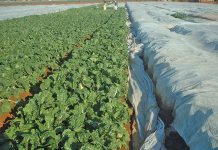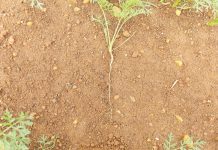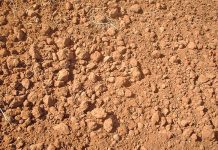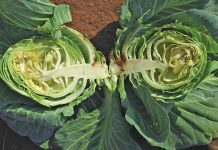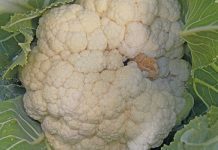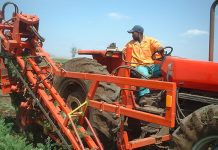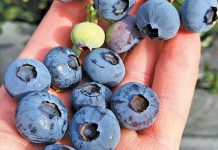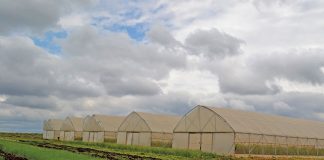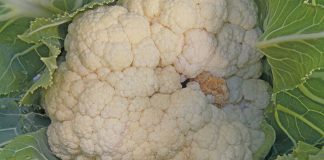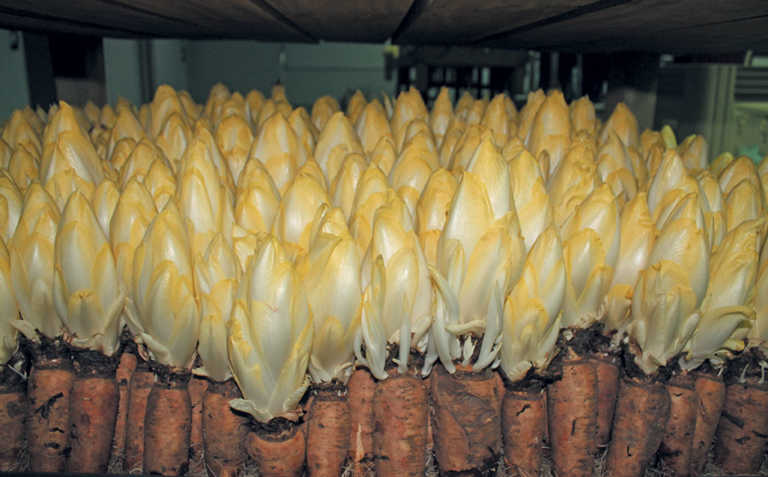
Photo: Jeandré du Preez
The technique for growing witlof, or Belgian endive, was accidentally discovered in the 1850s by an employee at the Botanical Gardens of Brussels in Saint-Josse-ten-Noode, Belgium.
He stored some chicory roots in a cellar, and when he saw them again, many days later, noticed that they had white leaves. Trying them out, he found that they had a good taste, and news of the discovery spread from there.
Producing witlof soon became a major industry in western Europe. The common name is from the Dutch wit loof, meaning ‘white leaf’. The smooth, creamy white leaves may be served stuffed, baked, boiled, cut or cooked in a milk sauce, or simply raw in a salad. The whiter the leaf, the less bitter the taste.
Witlof is a staple vegetable in Europe, where France is the largest producer. However, according to witlof grower Fanie van der Merwe, the vegetable is slowly but surely gaining popularity in South Africa too.
SA production
Four years ago, Fanie set out to cultivate witlof on his 2 033ha farm Bronaar in the Koue Bokkeveld just outside of Ceres in the Western Cape. His main focus on the farm was apples, pears, potatoes and onions, and witlof was initially brought in to diversify his business.
“Since then, the witlof operation has grown steadily, and today we employ 10 ladies who work in the packhouse and hydroponic facility and tend to the roots,” says Fanie.
“We supply 1t of witlof a week to supermarket chains across the country.”
The technique
According to Fanie, witlof production is costly, coming in at almost R350 000/ ha. He has 10ha under the crop. Growing the vegetable is a two-step process.
Phase one: hot and cold
Witlof is sown during January. “The optimal growing months are from mid-summer to autumn,” explains Fanie.
It requires hot temperatures while growing, and extreme cold, especially during the last two months of growth phase.“This makes the Koue Bokkeveld ideal for witlof production.”
As with any other vegetable seedlings, witlof seedlings are highly sensitive to moisture stress and need to be watered regularly when temperatures are high.
“The first growing phase is a water-intensive operation, using an average of between 7 000m³ and 10 000m³ water per season,” says Fanie.
Unsurprisingly, the drought has affected the quality of the roots. “Our average rainfall is usually between 650mm and 700mm. Up to now we’ve measured only 250mm.”
Because of the low yield, he had to import roots from the Netherlands, which he stored and grew in his hydroponic facility.
According to Fanie, the germination can be extremely challenging. “A witlof seed is full of nonsense,” he says bluntly.
Even in the Netherlands, which is renowned for its witlof, the germination rate of the seed is only 50%, he adds.
On Bronaar, he sows approximately 350 000 seeds/ ha of which only 150 000 (42%) germinate. The plants have to be kept just below the soil surface as they grow, showing only the very tip of the leaves.
After about five months, the seeds develop large tap roots, similar to a parsnip.
They are harvested when these roots reach 16cm. The roots are then washed and placed in cold storage (-1,5°C).
Phase two: hydroponic forcing
After cold storage, the roots are packed side by side into large trays that hold 350 roots/m². These are then stacked in a dark temperature-controlled room and fed a nutrient-rich water solution.
This is the second growing phase, during which witlof leaves are grown by forcing new growth from the harvested roots in a controlled environment.
“This method produces the cleanest and best-quality witlof,” explains Fanie.
It is important to monitor the temperature, airflow, humidity and pH of the water to prevent the roots from drying out, he stresses.
These aspects are controlled by a computer in his facility.
The process must take place entirely in the dark so that the shoots that form on the roots remain white.
“When exposed to light, the leaves turn green and lower the quality of the witlof,” Fanie says.
There is no demand for green witlof. After about three weeks in the dark room, the witlof is carefully broken from the roots.
At this stage, the witlof should weigh between 100g and 170g, and have a whitish-yellow colour. The packhouse workers remove any loose, open heads or blemished leaves, along with any leftover parts of the root. These are then used as feed on the farm.
Fanie supplies witlof to the local market throughout the year, and his hydroponic facility has the capacity for five times the current volume.
According to Fanie, introducing a product unfamilar to local consumers has proved a challenge, and he is engaged in an extensive marketing campaign to educate South Africans about the health benefits and versatility of the crop.
A premium product, priced accordingly
At this stage, Bronaar supplies witlof to Woolworths, Food Lover’s Market, Checkers
and quality grocers. The current price for the product ranges between R70/ kg and R110/kg.
While Fanie concedes that this is expensive for a leafy vegetable, he adds that consumers have to realise it is a high-value product.
Moreover, witlof is also healthy, and has a high fibre content, but is low in carbohydrates. The leaves are also rich in vitamins and minerals, especially folate and Vitamin B.
“I’m not going to become a millionaire overnight producing witlof, but the potential of the
product is there,” he says.
“Introducing witlof to Bronaar also got me utilising water optimally, and it’s a resource
that’s becoming scarcer. “It has also enabled me to generate income and work throughout the year.”
Email Fanie van der Merwe at [email protected]. For more information, visit
bronaar.co.za.

